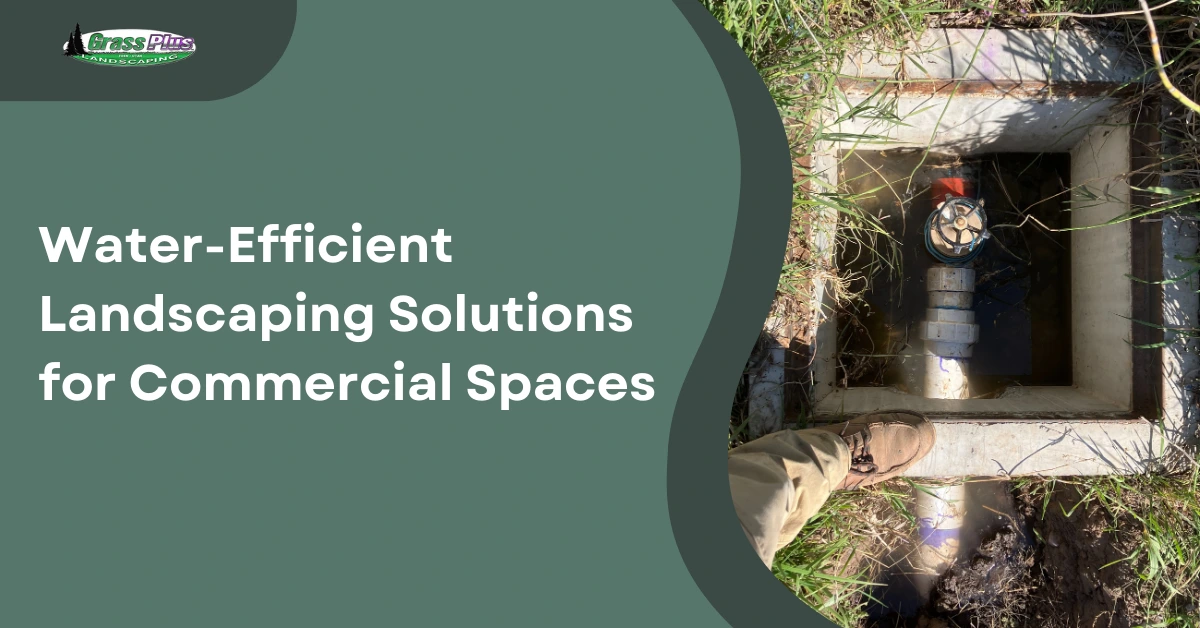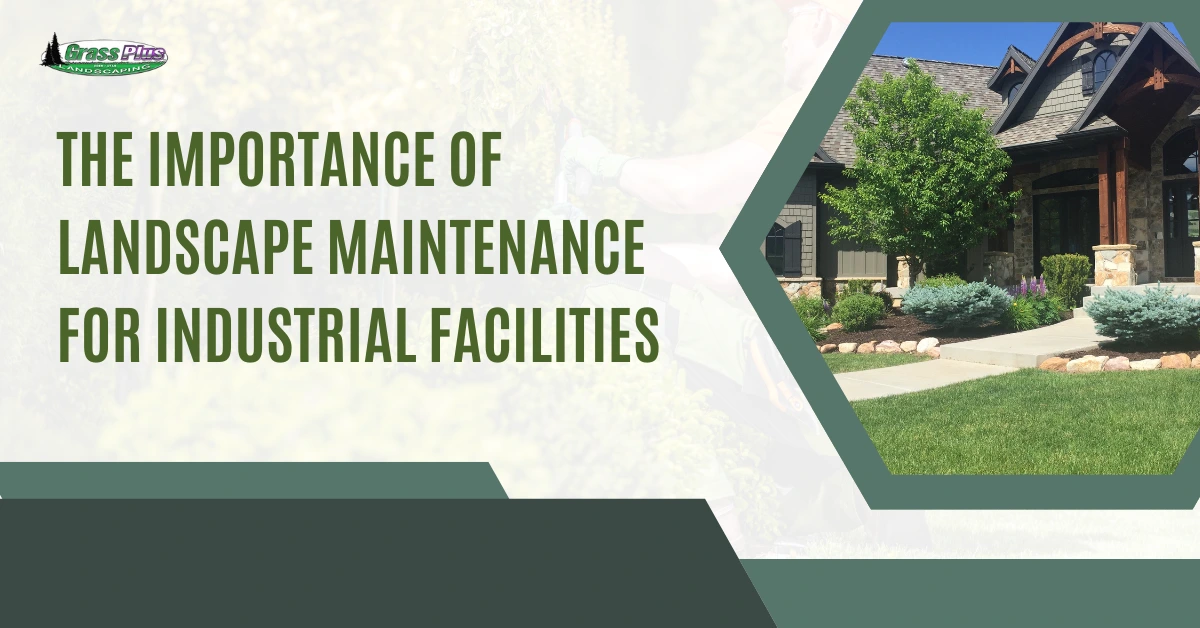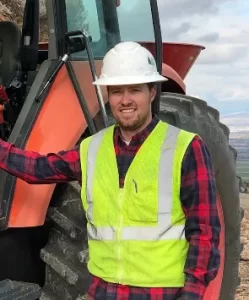Soil stabilization for erosion control involves various methods such as geotextiles, hydroseeding, and soil nailing. Geotextiles allow water passage while retaining soil particles, enhancing durability. Hydroseeding offers rapid vegetation growth to anchor soil, and soil nailing uses steel bars for reinforcing slopes. Erosion control blankets protect surfaces and promote vegetation, and gabion walls provide excellent drainage. Terracing can increase arable land on slopes, and chemical stabilizers bind soil particles through polymers or enzymes. Each method has specific applications, advantages, and environmental considerations. If you explore further, you’ll uncover which methods suit your specific needs best.

Key Takeaways
- Geotextiles: Permeable fabrics stabilize soil, control erosion, and promote vegetation growth.
- Hydroseeding: Sprays a slurry of seeds and mulch to rapidly establish vegetation and anchor soil.
- Soil Nailing: Reinforces soil with steel bars, enhancing stability on steep slopes and retaining walls.
- Gabion Walls: Wire mesh containers filled with rocks provide durable erosion control and excellent drainage.
- Chemical Stabilizers: Polymers, enzymes, and ionic stabilizers bind soil particles, increasing erosion resistance.
Geotextiles and Fabrics
Have you ever considered how geotextiles and fabrics can provide a robust solution for soil stabilization and erosion control? These materials are highly effective erosion control methods that offer structural support and reinforce the soil’s integrity. Understanding how to prevent soil erosion using geotextiles involves recognizing their role as permeable fabrics that allow water to pass through while retaining soil particles. This dual function guarantees that surface water doesn’t carry away crucial topsoil.
When you explore ways to prevent erosion, geotextiles and fabrics stand out due to their versatility. They can be used in various applications, including road construction, embankments, and drainage systems. By creating a barrier that stabilizes the soil, these fabrics mitigate the forces of water and wind that typically lead to erosion. Additionally, they’re cost-effective, durable, and easy to install, making them a practical choice for many projects.
Implementing geotextiles involves placing the fabric directly on the soil surface or integrating them within soil layers. This strategic placement helps contain soil particles, promote vegetation growth, and improve overall soil stability. Therefore, geotextiles and fabrics are vital when you’re looking for efficient, scalable ways to maintain soil integrity and prevent erosion.
Hydroseeding Techniques
While geotextiles offer a mechanical solution for soil stabilization, hydroseeding presents a biological approach by promoting rapid vegetation growth to anchor the soil. This technique involves spraying a slurry mixture of seeds, mulch, fertilizer, and water onto the soil surface. By doing so, you can effectively establish a vegetative cover that mitigates erosion.
When considering how to stop erosion, hydroseeding provides several advantages. The mulch in the slurry acts as a protective layer, retaining moisture and providing insulation for the seeds. This creates a prime environment for germination and root development. Additionally, the inclusion of fertilizers guarantees that the young plants receive crucial nutrients, accelerating their growth and stabilization capabilities.
To address erosion problems, hydroseeding is particularly useful on slopes and areas with difficult access. The technique allows for uniform seed distribution, assuring consistent vegetation cover. Furthermore, hydroseeding can be customized with specific seed mixtures designed for the local climate and soil conditions, further enhancing its effectiveness.
Soil Nailing
Soil nailing, an effective ground reinforcement technique, involves inserting steel bars into pre-drilled holes in the soil to improve its stability and prevent erosion. This method is particularly useful for steep slopes, retaining walls, and other structures where soil stability is crucial. The steel bars, or ‘nails,’ are typically grouted into place, which helps to bind the soil layers together, greatly enhancing the overall shear strength of the ground.
When implementing soil nailing, you’ll need to take into account several technical factors. The spacing and length of the nails must be carefully calculated based on soil properties, slope angle, and the load conditions. Additionally, the drilling process should be executed with precision to avoid disturbing the existing soil structure, which could otherwise compromise the stabilization effort.
The benefits of soil nailing include its adaptability to various soil types and its minimal environmental footprint compared to other stabilization methods. It’s also a relatively quick solution, making it ideal for emergency slope repairs. However, proper maintenance and periodic inspections are crucial to guarantee the long-term effectiveness of the soil nails. By following these guidelines, you can achieve a robust and durable erosion control system.
Erosion Control Blankets
Erosion control blankets, often made from natural fibers or synthetic materials, are designed to protect soil surfaces from erosion by providing immediate ground cover and promoting vegetation growth. These blankets effectively reduce the impact of raindrops, surface runoff, and wind on exposed soil, mitigating erosion risks.
When selecting an erosion control blanket, consider the following vital factors:
- Material Composition: Natural fibers like coir, jute, and straw offer biodegradability and soil enrichment, whereas synthetic options like polypropylene provide longer-lasting protection.
- Slope Gradient: Steeper slopes require more robust blankets with higher tensile strength to withstand gravitational forces and potential sliding.
- Vegetation Type: Confirm compatibility between the blanket and the intended vegetation. Some blankets facilitate seed germination better than others, promoting quicker plant establishment.
- Installation Method: Proper installation is essential. Anchoring the blanket securely using stakes or staples guarantees its effectiveness and longevity.
Silt Fencing
In addition to erosion control blankets, silt fencing offers another effective method for managing soil erosion and sediment control, especially in areas undergoing construction or land disturbance. Silt fencing serves as a temporary barrier, primarily made of geotextile fabric stretched between wooden or metal stakes. It’s designed to intercept and slow down surface water flow, allowing sediment to settle before water passes through the fabric.
When you’re installing silt fencing, make sure it’s entrenched properly. The bottom edge of the fabric should be buried at least 6 inches into the ground to prevent water from undermining the barrier. Place the stakes on the downhill side of the fabric, spaced about 6 to 10 feet apart, depending on the terrain and expected water flow.
It’s essential to monitor and maintain the silt fence regularly. Inspect it after heavy rainfall to verify there are no breaches or accumulated sediment that could compromise its integrity. If sediment build-up reaches half the height of the fence, you’ll need to remove the excess to maintain effectiveness. Properly installed and maintained, silt fencing can greatly reduce soil erosion and sediment transport, protecting water quality and adjacent properties from sedimentation.
Riprap Installation
When considering riprap installation, you’ll need to focus on the material selection process, guaranteeing the chosen stones are durable and appropriately sized for the site conditions. Installation best practices require precise placement and layering to maximize erosion control effectiveness. Adhering to these guidelines will help maintain the integrity of the stabilized area.
Material Selection Process
Selecting the appropriate materials for riprap installation is vital to guaranteeing the long-term stability and effectiveness of your erosion control project. When choosing riprap, it’s important to take into account factors like durability, size, and compatibility with the surrounding environment. Here’s what you should focus on:
- Stone Type: Opt for hard, angular stones like granite or limestone. These materials resist weathering and provide better interlocking capabilities, enhancing stability.
- Size Gradation: Utilize a mix of different-sized stones. This guarantees that smaller stones fill the gaps between larger ones, reducing void spaces and preventing water flow from eroding the soil underneath.
- Stone Quality: Select high-quality stones with minimal fractures. Substandard materials can break under hydraulic pressure, compromising the integrity of your riprap.
- Environmental Compatibility: Confirm the stones are environmentally inert, meaning they won’t leach harmful substances into the surrounding ecosystem. This consideration is particularly important in aquatic environments.
Installation Best Practices
To guarantee peak performance of your riprap installation, follow these key best practices meticulously. First, make certain proper site preparation. Clear vegetation and debris to create a clean, stable surface. Excavate to the appropriate depth, typically 1.5 times the diameter of the largest stone, to secure the riprap against displacement.
Next, use a geotextile fabric to prevent soil erosion and to provide separation between the riprap and subsoil. Overlap fabric edges by at least 12 inches and secure them with stakes or pins to prevent movement during installation.
For stone placement, start from the bottom of the slope and work upwards. This method guarantees stability and prevents slippage. Position the largest stones first, creating a solid foundation, and then fill gaps with smaller stones. Make certain a uniform, interlocking pattern to maximize stability.
Compaction is vital. Use mechanical tampers to compact the stones firmly into place, reducing voids and enhancing integrity. Regularly inspect the installation, focusing on the alignment and settlement of stones.
Lastly, address drainage. Make certain that water flows efficiently over and through the riprap, minimizing erosion. Install additional drainage features like culverts or drains if necessary. By adhering to these practices, you’ll achieve a durable and effective riprap installation.
Vegetative Cover
To effectively control erosion, you’ll need to understand the role of root systems in soil stabilization. Selecting the right ground cover is vital for ideal erosion prevention and should be customized to your specific site conditions. Additionally, proper maintenance and growth management are fundamental to guarantee the long-term effectiveness of vegetative cover.
Root Systems’ Erosion Control
Root systems play a critical role in erosion control by anchoring soil and reducing surface runoff. When you choose plants with robust root systems, you’re fundamentally creating a natural barrier against erosion. Here’s why root systems are so effective:
- Soil Stabilization: Roots infiltrate the soil, forming a network that holds soil particles together, reducing the risk of displacement.
- Reduced Surface Runoff: Dense root systems increase soil permeability, allowing water to infiltrate rather than wash away topsoil.
- Nutrient Cycling: Plants with healthy root systems improve soil structure and fertility by cycling nutrients, further promoting soil stability.
- Microbial Activity: Root exudates foster beneficial microbial communities that bind soil particles and increase soil cohesion.
Ground Cover Selection
Selecting the appropriate ground cover is crucial for effective erosion control, as the right vegetative cover can greatly improve soil retention and stability. When choosing a ground cover, evaluate factors such as root depth, growth rate, and adaptability to local conditions. Plants with extensive root systems, like native grasses, can anchor the soil effectively, reducing runoff and preventing erosion.
You should also consider the slope of the land. For steeper slopes, opt for fast-growing ground covers that establish quickly, such as creeping juniper or crown vetch. These plants form dense mats that protect the soil surface from direct impact by raindrops and surface water flow.
Soil type is another critical factor. Specific plants thrive in certain soil conditions; for instance, legumes are beneficial in nutrient-poor soils due to their nitrogen-fixing ability. For sandy soils, select plants with fibrous root systems that can bind loose particles together.
Lastly, think about climate. Drought-resistant species like sedum are ideal for arid regions, while moisture-loving plants like ferns are suitable for wetter areas. By carefully analyzing these variables, you can select a ground cover that will maximize erosion control and improve soil stability.
Maintenance and Growth Tips
Proper maintenance of vegetative cover is essential to secure long-term soil stabilization and effective erosion control. By following specific maintenance protocols, you can make certain your vegetative cover remains robust and functional. Here are key maintenance and growth tips to keep in mind:
- Regular Monitoring: Implement a schedule for regular inspections. Look out for signs of plant stress, erosion, or pest infestations. Early detection allows for prompt corrective measures.
- Watering: Adequate watering is important, especially during dry periods. Utilize irrigation systems to provide consistent moisture and avoid over-watering, which can lead to root rot and other issues.
- Fertilization: Applying the right type and amount of fertilizer will promote healthy plant growth. Conduct soil tests to determine nutrient deficiencies and tailor fertilization plans accordingly.
- Weed Control: Weeds can outcompete your vegetative cover for resources. Regular weeding, either manually or with herbicides, is necessary to maintain the health and stability of your soil.
Gabion Walls
Implementing gabion walls effectively mitigates soil erosion by utilizing wire mesh containers filled with rock or other sturdy materials. These structures are highly durable, adaptable, and provide excellent drainage properties, making them suitable for various terrains. When constructing gabion walls, you’ll need to guarantee proper site preparation, including leveling the ground and removing any debris. Selecting the appropriate fill materials, such as angular rocks, improves interlocking and stability.
Gabion walls offer several advantages. Their permeability allows water to pass through, reducing hydrostatic pressure and preventing water buildup behind the wall, which could otherwise cause failure. Additionally, the flexibility of the wire mesh allows gabion walls to adapt to ground movement without cracking, making them particularly resilient in areas prone to soil instability.
You should also consider the environmental integration of gabion walls. Over time, vegetation can grow between the rocks, further stabilizing the structure and blending it into the natural landscape. Regular maintenance is vital, requiring periodic checks for wire corrosion or damage and making sure that the rock fill remains intact. By following these guidelines, you’ll create a robust, long-lasting erosion control solution that effectively stabilizes the soil.
Terracing Methods
Terracing methods are a highly effective strategy for controlling soil erosion on steep slopes by creating level steps that reduce runoff velocity and promote water infiltration. By constructing terraces, you can transform a steep slope into a series of manageable, flat platforms, which not only combat erosion but also increase arable land.
When implementing terracing, consider the following fundamental elements:
- Design and Layout: Proper planning is vital. Verify terraces follow the contour lines of the slope to maximize water retention and minimize erosion.
- Construction Materials: Use materials such as rocks, logs, or concrete. Each material has specific advantages and should be selected based on site conditions and budget.
- Drainage: Incorporate efficient drainage systems to prevent waterlogging. French drains or perforated pipes can be used to direct excess water away from the terraces.
- Maintenance: Regular inspection and maintenance are important. Check for signs of erosion, structural damage, or blockages in drainage systems and address them promptly to maintain terrace integrity.
Terracing not only stabilizes the soil but also improves agricultural productivity by enhancing soil moisture content and reducing nutrient loss. By following these technical guidelines, you can effectively implement terracing methods to achieve long-term erosion control on steep slopes.
Chemical Stabilizers
Chemical stabilizers offer a versatile solution for soil erosion control by enhancing the soil’s physical properties and increasing its resistance to erosion forces. These stabilizers work by binding soil particles together, making the soil matrix denser and less prone to displacement by water or wind. Common chemical stabilizers include polymers, enzymes, and ionic stabilizers. Each type has specific advantages depending on your soil type and environmental conditions.
When you apply polymers, they form a film around soil particles, reducing permeability and enhancing cohesion. This method is particularly effective for sandy soils, which are highly susceptible to erosion. Enzymes, on the other hand, catalyze natural soil processes, promoting stronger particle bonding over time. Ionic stabilizers work by altering the electrical charges on clay particles, causing them to flocculate and form a more stable structure.
It’s essential to conduct a thorough soil analysis before choosing a chemical stabilizer. Factors like soil pH, organic content, and existing moisture levels greatly impact the effectiveness of the stabilizer. Additionally, consider the environmental impact and potential toxicity of the chosen chemical, guaranteeing it complies with local regulations. By selecting the appropriate chemical stabilizer, you can achieve a robust and long-lasting erosion control solution.
Conclusion
Incorporating these soil stabilization methods is like weaving a strong, protective blanket over vulnerable landscapes. Regardless of your choice of geotextiles, hydroseeding, or erosion control blankets, each technique acts as a steadfast guardian against nature’s erosive forces. By carefully selecting and implementing these strategies, you’ll guarantee the soil remains anchored, fertile, and resilient. Remember, the key to effective erosion control lies in a harmonious blend of methods, customized to your specific environmental needs.





